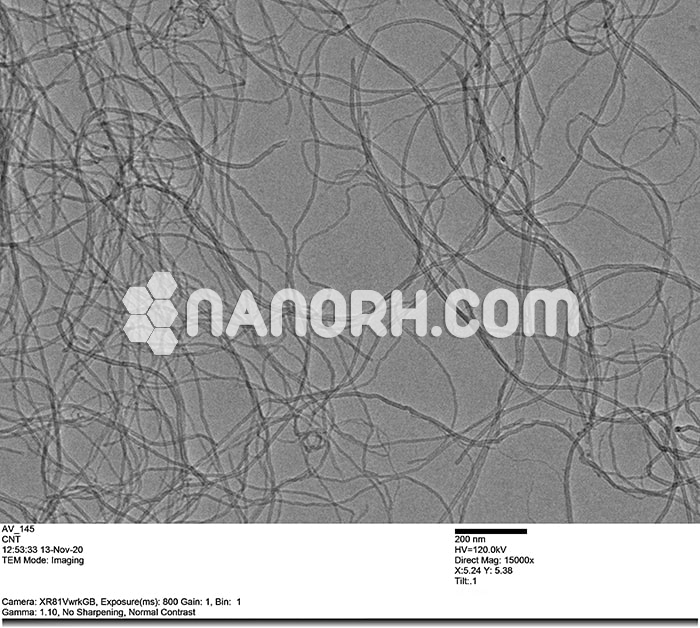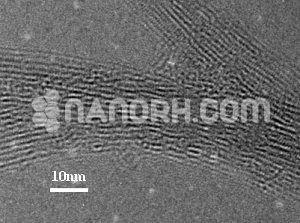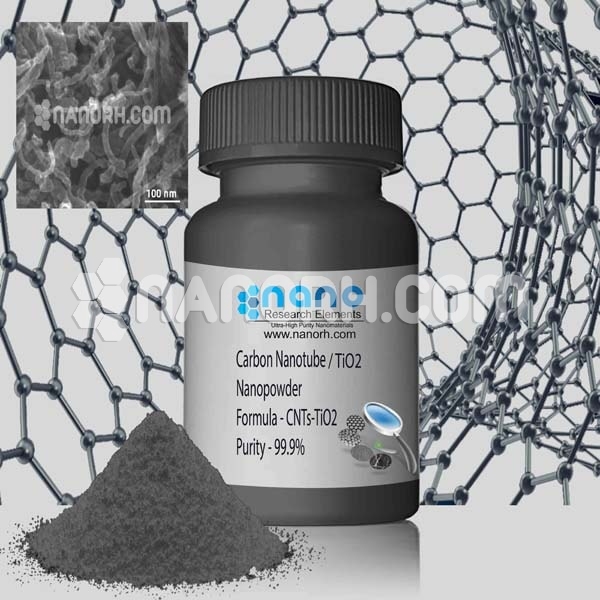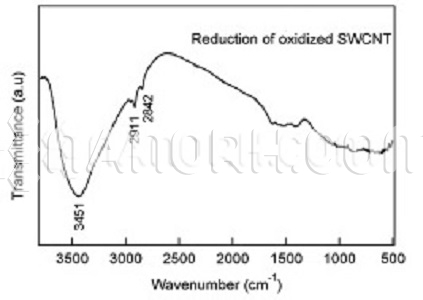| OH Functionalized MWCNTs | |
| Product No | NRE-34012 |
| CAS No. | NA |
| Purity | Carbon nanotubes > 99wt% |
| Average Diameter | 10-30 nm |
| Average Length | 10-30 um (TEM) |
| Special Surface Area(SSA) | 180m2/g(BET) |
| Tap Density | 0.22g/cm3 |
| True Density | 2.1g/cm3 |
| Electric Conductivity | > 100 S/cm |
OH Functionalized MWCNTs
Introduction:
OH-functionalized Multi-Walled Carbon Nanotubes (MWCNTs) are MWCNTs that have been modified with hydroxyl (–OH) groups on their surfaces. This functionalization process significantly alters the chemical properties of the MWCNTs, making them more reactive and easier to disperse in various solvents or matrices. The addition of –OH groups increases the hydrophilicity (water affinity) of MWCNTs, which is particularly useful for enhancing their compatibility with other materials, such as polymers or biological systems.
The functionalization of MWCNTs is typically carried out through chemical reactions such as oxidation, which introduces –OH groups and sometimes carboxyl (–COOH) or carbonyl (–C=O) groups on the surface. This process improves the nanotubes’ ability to interact with other substances, increasing their versatility in a wide range of applications.
Applications:
Nanocomposites:
Polymer Reinforcement: OH-functionalized MWCNTs are widely used as reinforcement in polymer matrices. The increased surface reactivity from the –OH groups promotes better adhesion between the MWCNTs and the polymer, enhancing the mechanical, electrical, and thermal properties of the composite material.
Improved Dispersion: The functionalization helps the MWCNTs to disperse more evenly in solvents or polymer solutions, leading to better performance in the final composite.
Biomedical Applications:
Drug Delivery: The –OH groups on the surface of MWCNTs can be used to attach therapeutic molecules or drugs for targeted drug delivery. The increased hydrophilicity makes these nanotubes more compatible with biological systems, enhancing their effectiveness in delivering drugs to specific cells or tissues.
Biosensors: OH-functionalized MWCNTs are utilized in biosensors to improve their sensitivity and specificity. The hydroxyl groups can facilitate the binding of biomolecules or enzymes, allowing the sensor to detect minute concentrations of target substances.
Gene Therapy: These functionalized nanotubes can also be used as gene delivery vectors, where the hydroxyl groups help in the binding of nucleic acids for gene transfer into cells.
Water Purification:
Adsorption of Contaminants: The –OH functionalization enhances the ability of MWCNTs to adsorb organic pollutants, heavy metals, and other contaminants in water, making them highly effective for use in filtration and purification systems.
Improved Hydrophilicity: The introduction of hydroxyl groups improves the dispersion of MWCNTs in aqueous environments, increasing their efficiency in water treatment processes.
Electrochemical Applications:
Supercapacitors and Batteries: OH-functionalized MWCNTs are used in the development of advanced supercapacitors and batteries. The –OH groups enhance the interaction of MWCNTs with electrolyte solutions, improving charge storage and conductivity.
Sensors and Electrode Materials: Due to their increased surface reactivity, OH-functionalized MWCNTs are also employed in electrochemical sensors and as electrode materials for various applications, such as in fuel cells and lithium-ion batteries.




